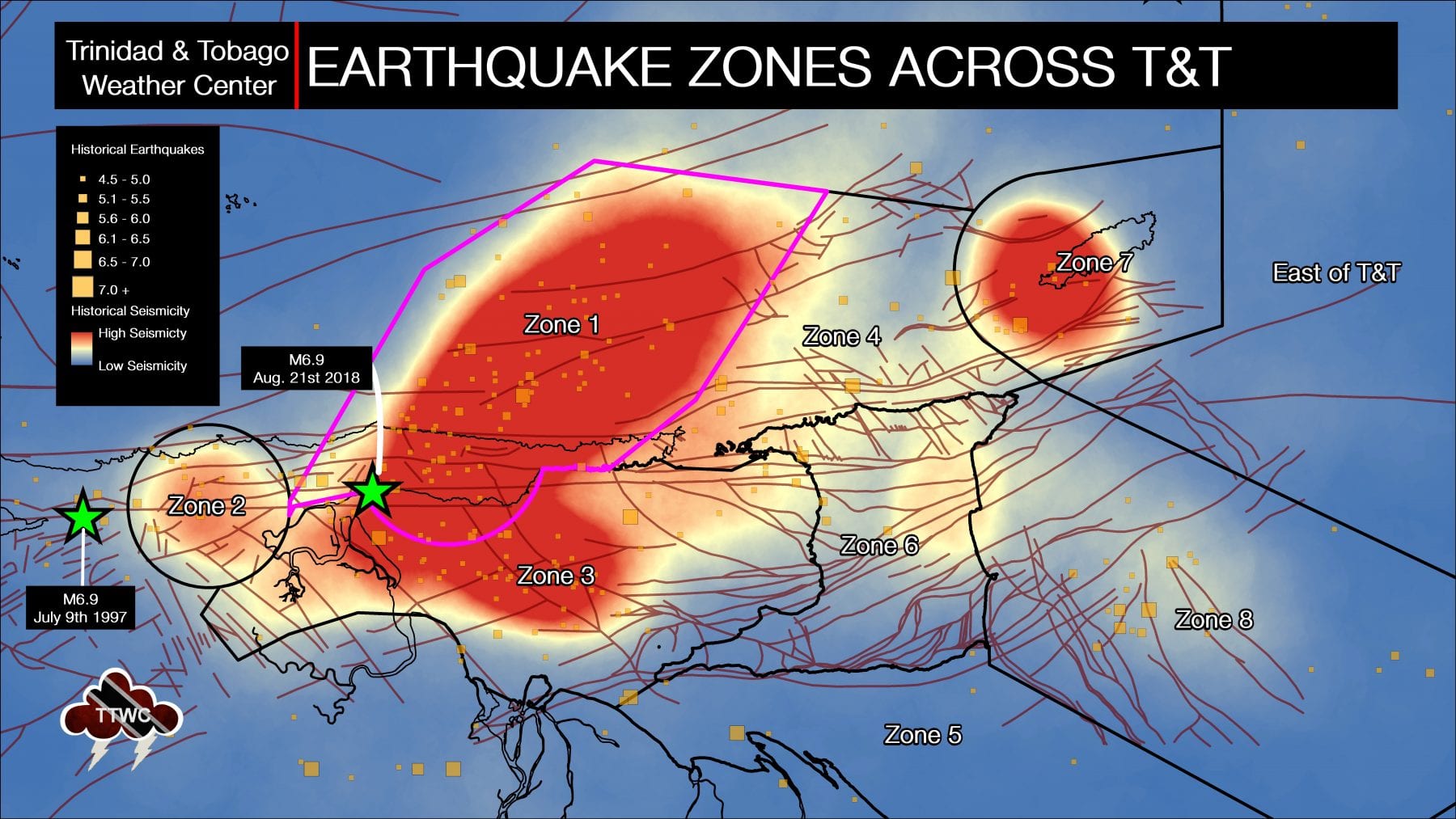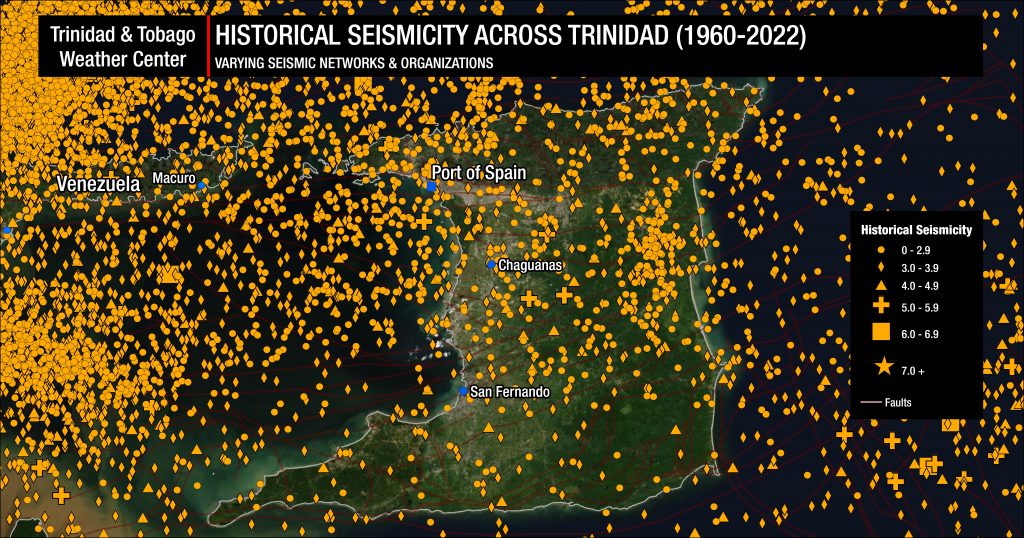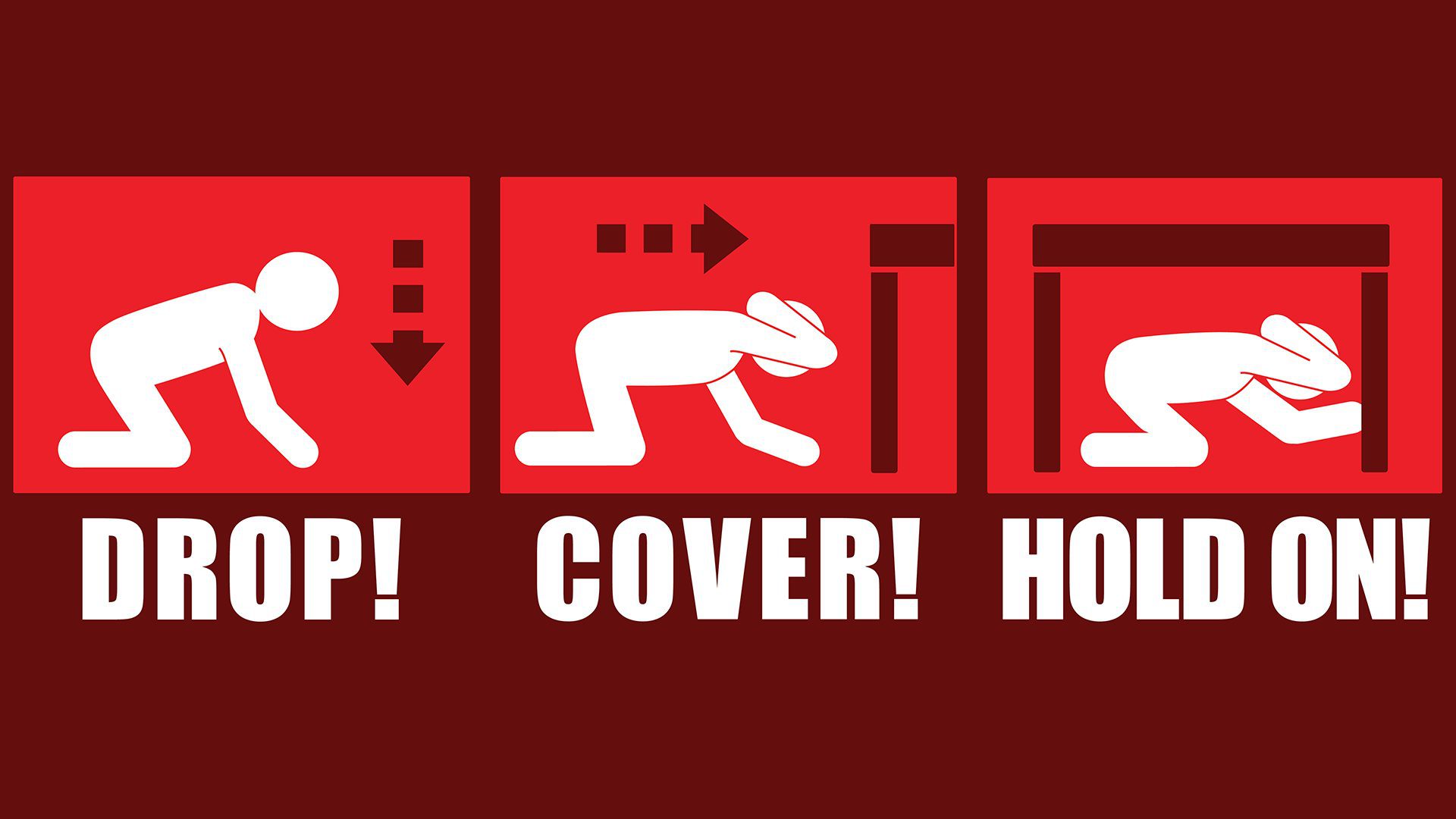The University of the West Indies Seismic Research Centre (UWI SRC) has recorded two light earthquakes northwest of Trinidad, occurring just five hours apart.
The first, occurring at 3:14 AM Monday, March 25th, 2024, registered as a light earthquake of magnitude 4.1. It was located at a depth of 66.5 kilometers and was approximately 26.21 kilometers north-northwest of Güiria, Venezuela, 49.65 kilometers west-northwest of Macuro, Venezuela, and 94.57 kilometers west-northwest of Port of Spain, Trinidad and Tobago.

The second event occurred at 8:16 AM on Monday, March 25th, 2024, and registered as a light earthquake of magnitude 4.2. It was located at a depth of 59.4 kilometers and was approximately 19.01 kilometers north-northwest of Güiria, Venezuela, 25.29 kilometers northeast of Irapa, Venezuela, and 97.05 kilometers west of Port of Spain, Trinidad and Tobago.

These earthquakes were reviewed by the UWI SRC, the authority for seismic and volcanological information in the English-speaking Eastern Caribbean.
Both events were felt with brief, light shaking being reported across northwestern Trinidad and northeastern Venezuela, with a quick, short jolt lasting no more than a few seconds. You can submit felt reports to the University of the West Indies Seismic Research Centre.
There is no tsunami threat.
There are four conditions necessary for an earthquake to cause a tsunami:
- The earthquake must occur beneath the ocean or cause material to slide within or into the ocean.
- The earthquake must be strong, with at least a magnitude of 6.5.
- The earthquake must rupture the Earth’s surface and occur at a shallow depth—less than 70 kilometers below the surface.
- The earthquake must cause vertical movement of the seafloor (up to several meters).
None of these conditions occurred.
Note that different seismic monitoring agencies use different methods, or several methods, for processing quake parameters worldwide. Each method has its limitations and will likely produce different results within the range of the data’s uncertainty. This is generally accepted within the scientific community.
Read More
Earthquake Magnitude & Intensity
Can earthquakes be predicted or forecasted?

Seismic zone one is a complex and, without a doubt, the most seismically active area near Trinidad. According to the UWI SRC, this area is the second most seismically active area in the Eastern Caribbean and has generated major to great earthquakes in historic times.
The 1766 magnitude 7.9 event, estimated to have been located in this area, destroyed the then Capital of San José. The 1888 magnitude 7.5 event was damaging from Trinidad to St. Vincent. The largest event for the instrumental period, i.e., since 1952, occurred on September 20th, 1968, and was of magnitude 7.0. Significant damage was caused in Venezuela, and Trinidad, where there was damage in Port of Spain.
In this area, the South American plate is beginning to descend rapidly into the Earth’s mantle as the detached oceanic lithosphere exists at depths between 50 to 300 kilometers within zone one. (Russo et al. 1993).
At shallower levels, the North Coast Fault Zone and the El Pilar Fault, part of the Boconó-San Sebastian-El Pilar Fault system, run across Zone 1. These fault systems compensate for the stress built up as the Caribbean plate slides past the South American plate. Hence, most of these earthquakes from these fault systems occur at shallow to moderate depths between 0 and 70 kilometers.
The UWI SRC says approximately 65 events of magnitude 2.1 and above are located in the area annually.
Based on the historical and instrumental seismic records, within 20 kilometers of both events on Monday morning, between 2000 and 2400 earthquakes have been recorded, with a number of magnitude 7.0+ events in this area. However, within the instrumental record, the largest event was the magnitude 6.9 earthquake that struck on August 21st, 2018. Quakes near both events’ hypocenter have typically occurred at depths shallower than 90 kilometers.
Can weather (and hot air temperatures) cause earthquakes?
Weather does not affect nor cause seismic events in Trinidad and Tobago. When hot weather occurs, one of the most common comments is that it is “earthquake weather?”
It’s a fairly common misconception whose origins date back to the 4th century B.C. Aristotle proposed that earthquakes were caused by winds trapped in subterranean caves. Small tremors were thought to have been caused by air pushing on the cavern roofs and large ones by the air breaking the surface.
This theory leads to a belief in earthquake weather that because a large amount of air was trapped underground, the weather would be hot and calm before an earthquake. A later theory stated that earthquakes occurred in calm, cloudy conditions and were usually preceded by strong winds, fireballs, and meteors.
There is no such thing as “earthquake weather.” Statistically, there is approximately an equal distribution of earthquakes in cold weather, hot weather, rainy weather, etc.
Very large low-pressure changes associated with major storm systems (typhoons, hurricanes, etc.) are known to trigger episodes of fault slip (slow earthquakes) in the Earth’s crust. They may also trigger some damaging earthquakes. However, the numbers are small and not statistically significant.
Water can remove sediment or infiltrate the ground and increase or decrease the overburden pressures. This change in ground pressure can trigger minor seismic activity. Excessive rainfall, not hot weather, can also contribute to minor seismic activity.
Earthquake weather does not exist, and hot temperatures do not cause earthquakes.
Source: USGS, Dr. Malcom Johnston
Has there been an increase in seismic activity?

Trinidad and Tobago and the surrounding region are very seismically active. Across the Eastern Caribbean, over 2,200 earthquakes are recorded annually. Since 1990, the University of the West Indies Seismic Research Centre has recorded an annual average of 280 earthquakes in the Trinidad and Tobago region (area bounded by 9.5°- 11.5°N & 59.5°W – 63.5°W). Of these 280 quakes, 50 of these seismic events are, on average, above magnitude 3.5.
Most earthquakes occur northwest of Trinidad in an area known as North of the Paria Peninsula, which has the second-highest seismicity in the Eastern Caribbean. According to the UWI SRC, approximately 65 events of magnitude 2.1 and above are located in the area annually.
However, the UWI SRC has said regional seismic and volcanic activity has been elevated for several years in its annual report for 2020 to 2021.
On average, the Eastern Caribbean has seen a pattern of major (M7.0-M7.9) quakes every 20 to 30 years. That pattern has stayed true. The last major (M7.0-7.9) quake occurred north of Martinique in 2007.
Historical patterns indicate that great quakes (M8.0+) on the Richter Scale have occurred every century in the region. The probability of another event at that level is high since the last >M8.0 earthquake occurred in 1843. While it is impossible to say definitively when the next great quake will occur in the region, the time since the last one is now more than 170 years ago.
It is important to note seismic activity *cannot* be predicted – meaning the precise time, date, magnitude, depth, etc., cannot be known ahead of time based on current research and technology.
Now is the time to create or go over your earthquake preparedness plan and know what to do during, before, and after an earthquake.












